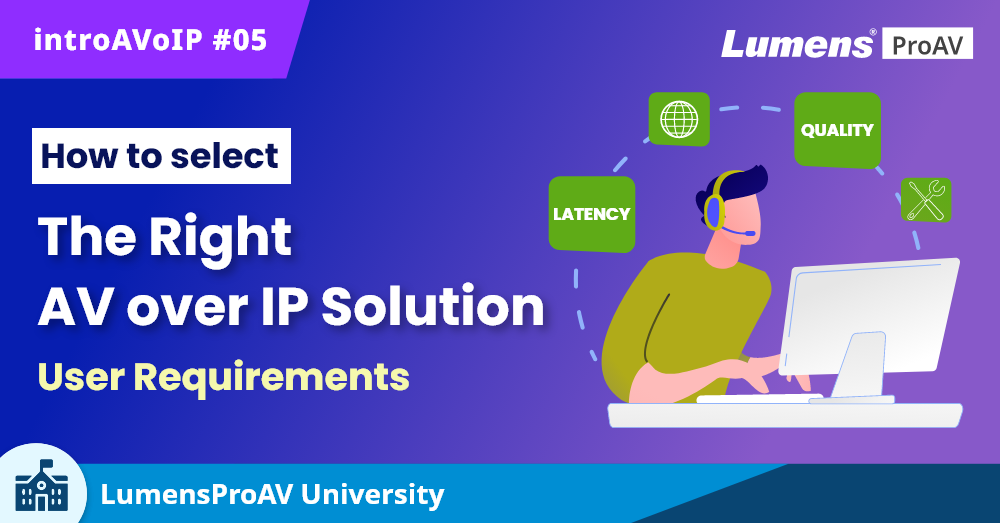【ProAV Lab】introAVoIP #05 How to select the right AV over IP Solution - User Requirements
Written by Kieron Seth, Product Marketing Director at Lumens
August 23, 2022 24892

▶ Introduction
With network technology evolving rapidly, there is an inevitability about the replacement of traditional video and audio transmission by AV over IP. However, with so many AV over IP solutions on the market, choosing the right technology can be a challenging task. It’s vital to assess many considerations, especially user needs.

▶ Considering User Requirements
Now that you are aware of the price differences between the available AV over IP solutions, we recommend choosing the most appropriate solution based on your actual requirements:
- Image Quality
In general, you should always choose the best image quality possible that your budget will allow.
◈ SDVoE technology supports superb image quality and lossless compression suitable for very high-quality transmission. It is best suited to 10G networks.
◈ New compression technologies can deliver visually lossless results, with image quality that it is so good that it is virtually identical to uncompressed video. This compressed video can be streamed over 1G networks.
◈ High-efficiency video codecs can support 100M networks and the picture quality is good. However, there is a chance of noise in shadow areas or blurring with camera movement.
- Latency
Latency – also known as signal delay between the source and display – a is key factor. In live events and control rooms, very low latency is essential. Elsewhere such a low delay may not be so pivotal. Latency is affected by a number of factors including the processing speed of the transmitter and display. The type of network also plays an important role:
◈ 10G networks have the bandwidth to allow for high levels of data traffic without fear of bottlenecks. As a new high profile, generation technology, 10G equipment is usually manufactured to perform at the highest level and with the least possible delay. 10G is therefore ideal for organizations that rely on KVM technology and SDVoE.
◈ 1G networks can deliver latency of around 30ms which is virtually imperceptible. Because of this, 1G is often used in live video production (such as conferences, theater or sports), where in-venue screens need to be perfectly synchronized with the actual performance.
◈ A 100M network can be used for video over IP, but latency will be apparent. However, this may be acceptable when streaming video to external audiences.
- Bandwidth
Where a network is shared, bandwidth can be an issue. Installers need to assess the available bandwidth especially if a network is used concurrently for voice-over-IP, unified communications and IT data transfer as well as AV over IP. The performance of any network, even a 10G infrastructure, will deteriorate if it is fully saturated. To maximize data flow, reduce bottlenecks and latency issues, users should install the best available cabling (Cat 6 where possible).
▶ Comparison of Application Scenarios
The table below shows a summary table for you to choose the solution that best suits your specific requirements.
| 100M bps | 1G bps | 10G bps | |
| Image Type | Standard Video | High Bitrate HD Video and Compressed 4K |
Uncompressed 4K Video |
| Use Case | Campus Broadcast Distant Learning Video Conference |
Sport Events Casinos Sports Bars Control Room |
Theater TV Station Concert Halls |
Click here Back to Top ↑
